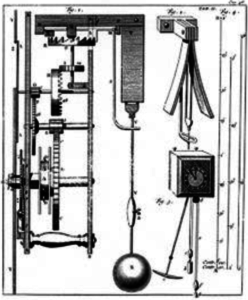 CFP: Oscillating pendulums and the swinging philosophy of the 17th century
CFP: Oscillating pendulums and the swinging philosophy of the 17th century
Special Issue of Society and Politics, ed. by Dr. Filip Buyse
At the end of his life, around 1637, Galileo Galilei dictated to his son the plans for one of the first drawings of a clock based on the idea of a pendulum. Probably based on Galileo’s idea, in 1656 Christiaan Huygens invented the pendulum clock with the aim not only of measuring time but also of resolving the longstanding problem of how to determine longitude at sea.
The pendulum clock was an application of the principle of isochronicity that Galileo discovered. By means of his pendulum clocks, Huygens discovered the phenomenon of synchronicity as he reports in 1665 in his correspondence to Robert Moray, his contact person at the Royal Society.
Huygens’ sophisticated instrument was not only important for its scientific and technical applications. During the 17th century the pendulum clock also became for many early modern philosophers a leading metaphor. First of all, it became a metaphor for the conception of nature as a whole and the body in particular. Secondly, it became an important metaphor for the understanding of the “relation” between mind and body.
This special issue aims at exploring the relevance and importance of the pendulum and the pendulum clock for 17th century philosophy.
Possible questions to be addressed may include:
- The pendulum (clock) as a metaphor for single and complex bodies
- The pendulum clock as a metaphor for nature as a whole
- Pendulum clocks as metaphors for the Mind/Body “relation”
- The concept of “sympathy” of pendulum clocks and its applications
- Applications of the pendulum and the pendulum clock in medicine, technology and the controversy between Huygens and Viviani about who invented the pendulum clock
- The pendulum clock as a method for the determination of longitude at sea o The pendulum law as (one of) the first modern law(s) of physics?
- The concept of isochronicity and its applications
- The concept of synchronicity and its applications.
Please submit your paper to f.a.a.buyse@gmail.com before December 31, 2016.
For further guidelines, please download the info sheet.